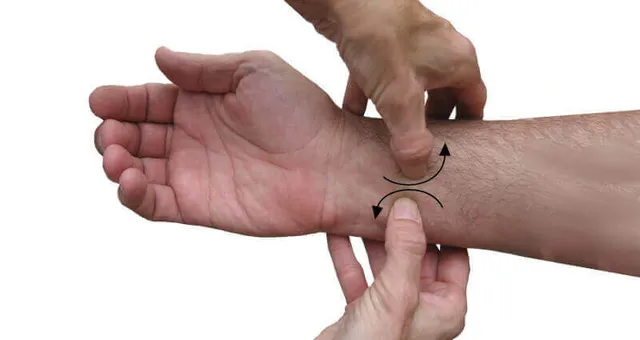Waking up with numb or tingly fingers? Or finding your hands weak after a long day? Sounds like carpal tunnel syndrome (CTS), a common nerve compression issue in the wrist. While surgery can be effective, most people can improve with non-invasive treatments. At Proactive Health, we help you find relief through conservative therapy, empowering you to avoid surgery and move on with your life.
What Is Carpal Tunnel Syndrome?
Carpal tunnel syndrome happens when the median nerve is compressed within the wrist canal. That canal gets tighter when your wrist bends, especially during repetitive tasks or while sleeping. Common CTS symptoms include tingling, numbing, weakness, and sometimes pain extending to your forearm or shoulder .
Who’s a Good Candidate for Conservative Treatment?
If your symptoms are mild to moderate—like occasional numbness or nighttime tingling—you’re likely a great fit for non-surgical treatment . However, severe symptoms (e.g., constant numbness, muscle loss, or hand weakness) may not respond well without surgery.
Proven Non-Surgical Treatments
Wrist Splinting (Night & Activity-Based)
Wearing a wrist brace that keeps your wrist in a neutral position prevents harmful flexion or extension. Many find the most relief using it while sleeping and during triggering activities .
Activity Modification & Ergonomics
By reducing repetitive wrist movements and adjusting work habits—like taking frequent breaks or using ergonomic tools—you reduce nerve compression pressure
Physical & Occupational Therapy
Professional therapists guide you through nerve-gliding, tendon-gliding, strengthening, and stretching exercises. Manual therapy, including massage and joint mobilizations, also helps improve nerve movement and reduce entrapment.
Medications & Injections
Non-steroidal anti-inflammatory drugs (NSAIDs) and short-term oral steroids can ease pain. Corticosteroid injections into the carpal tunnel can provide longer relief—sometimes lasting months. These are considered when other conservative interventions aren’t enough.
Alternative Modalities
Some patients benefit from acupuncture (especially electro-acupuncture), extracorporeal shockwave therapy, iontophoresis, ultrasound, or kinesio-taping. These show encouraging but still limited evidence and are best considered supplementary .
Home-Based Exercises & Self-Care
Consistent at-home routines help reduce symptoms and improve wrist function. Try these each day for 3–4 weeks:
- Nerve-gliding exercises: Move your wrist and fingers in various positions to stretch the median nerve.
- Tendon-gliding sequences: Slide your fingers through specific hand postures to free up tendon movement.
- Wrist extension/flexion stretches: Do gently after gliding exercises—but avoid if symptoms spike.
- Self-massage or myofascial release: Use gentle firm pressure along your forearm and wrist to reduce tension .
Stop any exercise that causes significant pain or worsening numbness—and check in with your provider if that’s the case.
When to Seek Professional Care
If symptoms don’t improve after 3–4 weeks of home treatment—or if you experience persistent pain, weakness, or nighttime numbness—you should consult a professional. At Proactive Health, we offer full evaluation with diagnostic testing and a customized plan based on your condition.
How Proactive Health Can Help
At Proactive Health we focus on early intervention and hands-on care to help you avoid unnecessary surgery:
- Thorough assessment of symptoms, strength, and nerve function
- Custom wrist splints crafted to support you
- Hands-on therapies: manual mobilization, soft tissue work, and nerve techniques
- Personalized exercise programs and ergonomic guidance
- Safe delivery of steroid injections if indicated
Our goal is to relieve your symptoms, restore hand function, and get you back to work, hobbies, and life—without the operating room.
Prevention & Long-Term Tips
Even after symptoms improve, keeping carpal tunnel at bay matters. Stay consistent with:
- Night-time splinting and bracing during repetitive activities
- Regular breaks, breaks, breaks—especially during typing or tool use
- Strengthening exercises and wrist-stretch routines
- Workspace ergonomics: neutral wrist position and supportive equipment
Ready to Take Control of Your Wrist Health?
Carpal tunnel doesn’t have to mean surgery. With the right blend of splinting, exercises, and specialized care, you can find meaningful relief. At Proactive Health, we’re here to guide you every step of the way—providing expert assessment, treatment, and follow-through.
Fed up with numbness, tingling, or wrist discomfort? Book your consultation at Proactive Health today. Let us help you treat symptoms, regain strength, and keep surgery off the table.



